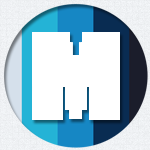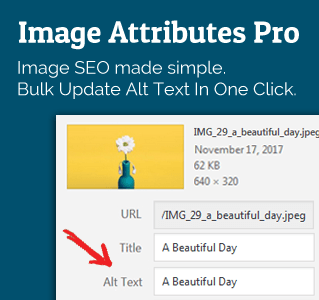If you are asking this question, I think you are in the right track.
India is a booming economy and there are plenty of opportunities to invest your money. Remember the rule: Only invest in instruments that you understand.
All investment options can be broadly categorised into two. Debt and Equity.
Debt Investments
Debt is when someone borrows money from you and offers you to pay an interest on it. Bank fixed deposit is a popular example.
When you “give” your money to a bank in the form of a fixed deposit, they are borrowing your money and offer you to pay a fixed percentage as interest.
Other examples of debt investments are government and company bonds, debt mutual funds, PPF and EPF.
The goal of debt investment is safety. Risk is low (and should be low) and so are the returns. This is where you park your money that you know you are going to need within the next 5 years.
Choose instruments that will not default on the payment. Do not go to your neighbourhood private bank just because they offer higher rate of interest than a nationalised bank.
Equity Investments
Equity investments are instruments that invest in equity. Equity is ownership of a business.
Some examples are buying stocks of a company or investing in equity mutual funds. Equity mutual funds in turn uses your money to buy stocks, so they are basically the same thing.
The goal of investing in equity to grow your wealth over the long term. Only invest money that you plan to use 5+ or 10+ years into your future.
Popular Investment Options In India
In any stable and growing economy there will be plenty of opportunities to invest. If you are starting out it’s best to stick to the popular ones simply because the risks involved are generally lower.
Bank Fixed Deposits
Our parents favourite investment instrument. Any RBI regulated bank is safe. And investments up to 5 lakh INR are insured. So your principal is safe.
Liquidity (how easily can you convert an instrument into cash) is high. You can typically walk into a bank and your FD certificate and walk out with cash.
Downsides: Interest earned is taxed as your income. And if you withdraw before the maturity date, there is a penalty.
I started here but with falling interest rates and high taxation (and knowing that there are better options), I am not longer a fan.
PPF / EPF
Again our parents favourite. Safety assured by the government, so there is no worry about that. Any amount you invest is locked for the first 7 years, so liquidity isn’t the greatest.
PPF interest rate used to be set at 12% for a long time, but lately it has been falling (down to 7.1% today) and is bound to fall lower and lower.
However, the key feature is that both PPF and EPF are tax saving instruments and even the interest is tax free.
I use PPF for the “safe” part of my long term goals. Withdrawal being tax free is attractive for me.
I recommend opening a PPF account with just 500 INR each year until you reach the 7 year mark. I will cover this in a future dedicated article.
Recurring Deposits (RD)
Your parents probably opened RD’s in your name. This is where you invest a fixed amount each month for an assured interest at the end of the term. Returns are more or less similar to FD returns.
Back in the day our parents used this to save each month. It was effective to cultivate a saving habit.
It’s too much hassle if you ask me and I am not into it. Returns are taxable each year as well.
Chit Funds
Chit fund act like a pool where a fixed number of people contribute a fixed amount each month. A lot is taken with the names of each participant. The participant who gets the lot that month gets the entire payout.
An example: 10 people contribute 1000 INR each month for 12 months. There should be a corpus of 10,000 INR each month for payout. However in the initial months, the payout will be much lesser, say 7000 INR. The remaining amount is considered as profit and split between everyone as interest.
Second month payout could be 7500 INR, third month 8000 INR and so on. As we approach the 12th month, the payout will be very close to 10,000 INR.
So the person who gets the lot the first month gets 7000 INR to use immediately (as a loan). They still have to pay every month and in total spend 10,000 INR. The excess they pay (10,000 INR minus 7000 INR i.e. 3000 INR) is their interest for the loan.
This is a simplified example, there are other expenses involved. The person or agency conducting the chit fund collects a commission.
My dad has managed to generate returns that exceed fixed deposits. I find it cumbersome and as too much work. I never invested in any.
Gold
Need I say more? Gold is a truly global investment instrument. However as safe at it my sound, if you look at Gold as an investment instrument, the prices fluctuate a lot.
Wouldn’t recommend buying physical Gold. Hold it in demat form.
Typically, Gold prices go up when markets crash and vice versa. I have read that some (around 10%) Gold in your investment portfolio is great. However, I am yet to explore this area.
Mutual Funds
In simple terms, mutual fund is where you give your money to a fund manager who will invest your money for you with the aim of making a profit.
Mutual funds are broadly of two types: Debt Mutual Funds and Equity Mutual Funds. There is a plethora of sub-categories and understanding them is really important.
Debt Mutual funds invest in debt instruments and are generally safe. I am a fan of debt mutual funds as replacement for FD’s since liquidity and taxation benefits are better.
I highly recommend mutual funds for beginners. We will definitely look into mutual funds in detail later.
Direct Equity / Stock
Buying stock is simply buying equity in a company. You become a part owner of the company. When the company is profitable the value of the company grows and thus the value of your share in the company grows.
Buying direct equity is not for everyone. If you cannot pick at least 5 companies that you are keen on learning about and investing for the long term, then it’s best to stay away and stick to mutual funds.
However, if you have the time and patience to learn and money to invest, I think it is worth your time. I would suggest to start learning once you have at least 5 lakh INR invested in equity mutual funds.
Liquidity is high because you can sell the stock as long as there is a buyer. However being able to sell your stock at a profit might not be always possible and this investment needs a long time horizon to see good profits.
This is not to be confused with stock trading. Stock trading is a profession, not an investment.
Real Estate
Buying land. Since land is a limited resource and since our population is growing, the demand for land tends to go up. Thus your investment grows.
Buying land needs huge capital. Liquidity is extremely low. And land needs management like boundaries, pruning the trees and what not.
Personally I prefer investments that I can manage from a laptop. As for land, I think it’s better to buy the land to build a house on so that you can take advantage of the land and maintenance is easier.
Buying Flats / Apartments
Many consider these as investments. This typically works out because the cost of residential properties generally increase at an accelerated pace in growing cities.
Buying a flat or apartment for rental income doesn’t work out. Rental income typically does not even match bank FD rate. Plus you have to pay taxes on rental income anyway.
Buying a flat to live in is another story. It’s a lifestyle choice and there is nothing wrong with it. The reason we make money and invest money is to use it!
Alright, that’s the list. If you are a true beginner, I recommend reading about:
- What are mutual funds
- Debt mutual Funds
- Equity mutual Funds
- PPF account (take action and open one)






Leave a Reply